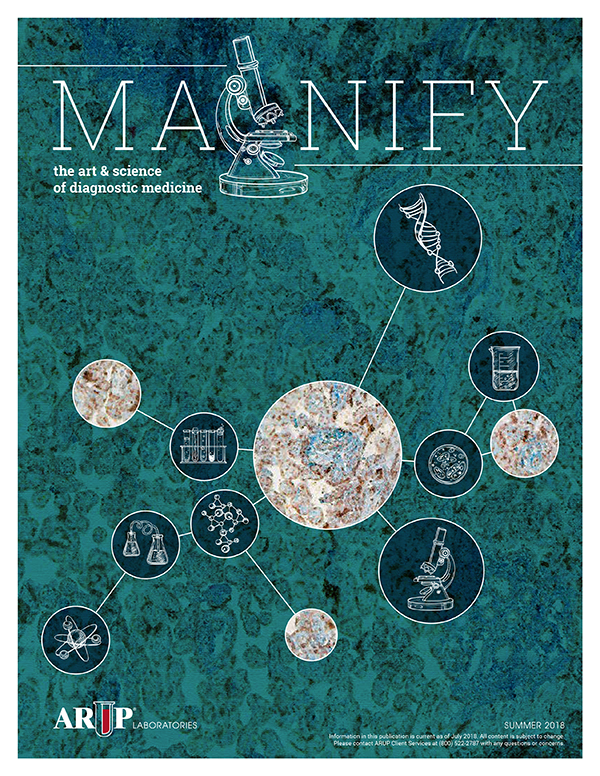
Magnify Summer 2025
Better Cancer Screening Is Changing Lives
Although cancer incidence in those older than 50 years has declined in recent years, a concerning upward trend has emerged as incidence in younger populations has increased.
But the news isn’t all bad. Laboratory medicine has made great strides in screening methods that are more accessible and less invasive. Early screening and detection can dramatically alter the outcomes for patients diagnosed with cancer.
According to the American Cancer Society, patients diagnosed with breast cancer while the cancer is still classified as local have a five-year survival rate of 99%, compared with only 32% when the cancer is classified as distant.
For colon cancer, the five-year survival rate in those with local disease is 91%, compared with just 13% in those with distant disease.
Gillian Jones discovered the importance of accessible screening when an early-onset cancer diagnosis shocked her and her family.
Screening and risk assessment are only effective if they are utilized. Julie Solimine, MGC, LCGC, a genetic counselor at ARUP Laboratories who has counseled patients with a family history of cancer on appropriate germline genetic testing, wishes providers and patients better understood their testing options.
From germline genetic testing to determine cancer predisposition to less invasive screening methods for colon cancer, laboratory medicine drives the innovation that makes earlier detection possible.
In this edition of Magnify: The Art and Science of Diagnostic Medicine, Jones and Solimine share how cancer screening has changed lives. Read their stories:
45 Is the New 50. She Was 29 Years Old When Colon Cancer Changed Her Life
Clinical Perspective: Better Adoption of Genetic Testing Would Mitigate Risk of Hereditary Cancer




